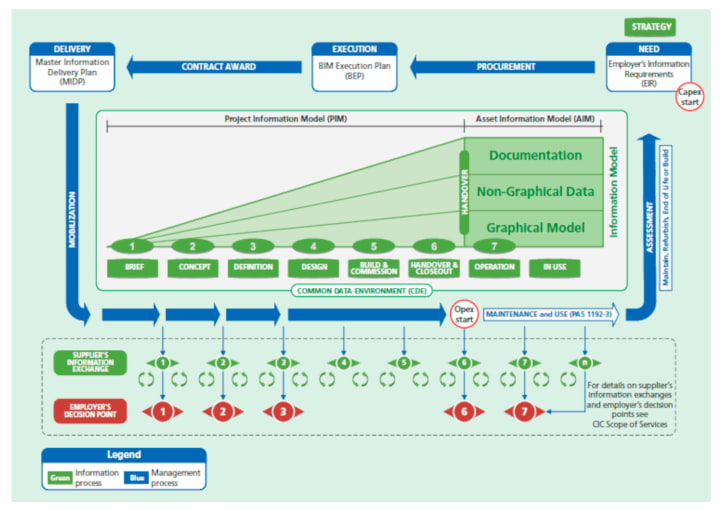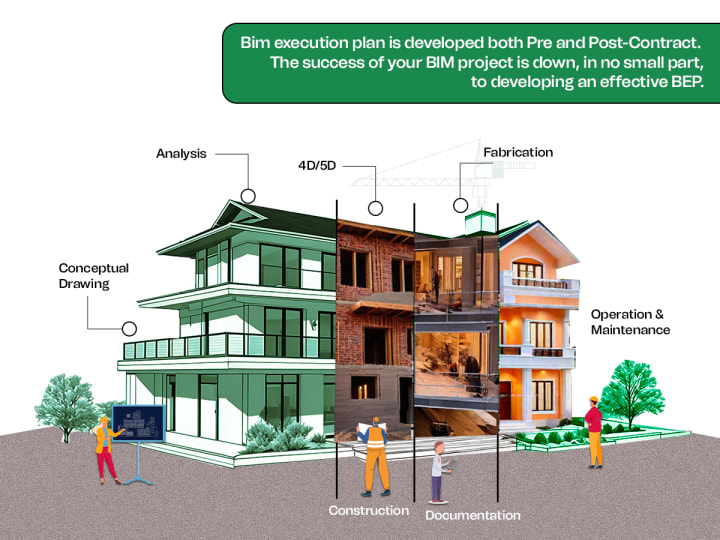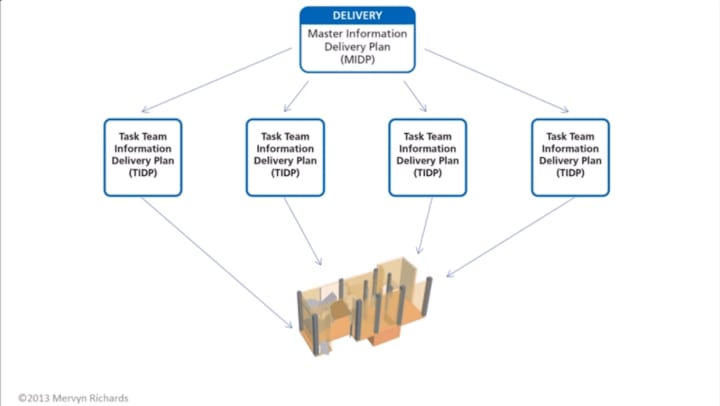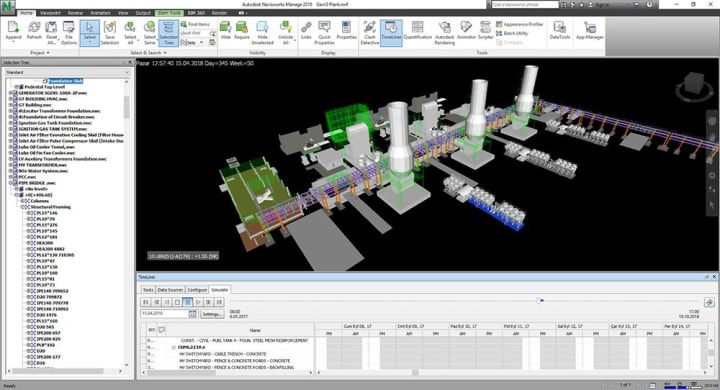BIM Management Explained
Optimizing Design, Construction, and Building Operations (Explains the scope of BIM management)

BIM management entails orchestrating and supervising the integration of BIM into construction projects, involving processes, technology, and personnel. BIM itself acts as a digital depiction of a facility's physical and functional attributes, serving as a comprehensive information source for informed decision-making throughout the facility's lifecycle.
BIM MANAGEMENT CONSISTS OF
BIM Management involves collaboration, coordination, communication, exchange, and collation. Key aspects at the project level include:
Employer’s Information Requirements (EIR):

- BIM manager develops the EIR, defining uses and requirements for BIM from the Project Sponsor’s perspective.
- Project Implementation Plan (PIP) is prepared based on the EIR, describing the project team's capability to deliver.
BIM Execution Plan (BEP):

BIM manager develops the BEP, defining how the team will deliver the EIR.
Includes BIM use cases for each project stage, deliverables, model author and users, model elements, processes, and hardware/software environment.
A significant BIM Execution Plan (BEP) is crucial for facilitating team members execution of BIM’s role in construction management. It is all about documentation efforts in one place, saving time and money by highlighting significant aspects and keeping track of project teams.
Master Information Delivery Plan (MIDP):

Lists all project information deliverables, including models, drawings, specifications, equipment, and schedules.
Identifies when, by whom, and using what protocols and procedures project information is prepared.
Helps define the project schedule and its linkage to BIM deliverables.
SIMPLE STEPS TO BETTER BIM MANAGEMENT
- Create a detailed BIM Execution Plan with a clear scope
- Sequence BIM tasks with your team
- Periodically manage the BIM tasks
- How to verify the 3D model against your BIM requirements
CREATE A DETAILED BIM EXECUTION PLAN WITH A CLEAR SCOPE
The BIM execution process involves identifying the model uses, developing a process mapping procedure, and defining the necessary infrastructure for the project. A high-level map is created to illustrate the sequencing and interaction between primary BIM uses, followed by more detailed process maps for each BIM use. Then, the information exchanges between project participants should be clearly identified, and the process can be defined in the Information Exchange table.
The team must also define the supporting infrastructure needed for the BIM process, including the delivery structure, contract language, communication procedures, technology infrastructure, and quality control procedures.
The BIM plan should address the following categories of information:
- BIM Project Execution Plan
- Overview Information
- Project Information
- Key Project Contacts
- Project Goals and BIM Objectives
- Organizational roles and staffing
- BIM Process Design, BIM Information Exchanges
- BIM and facility data requirements
- Collaboration Procedures
BIM TASKS SEQUENCING WITH YOUR TEAM

The pointers below is about BIM task sequencing with your team. Basically, the importance of efficient coordination in Building Information Modeling (BIM) projects is to prevent clashes and maintain workflow integrity. It advocates for a structured system priority structure and a proactive clash avoidance workflow to minimize clashes and enhance efficiency.
Avoid Simultaneous Modeling: Concurrent or out-of-sequence modeling by teams leads to numerous clashes, resulting in extensive rework and inefficiency in the BIM workflow.
Implement System Priority Structure: Utilize a structured system to prioritize tasks, ensuring teams agree on the optimal sequence for modeling, thus minimizing clashes and streamlining workflow.
Shift to Clash Avoidance Workflow: Embrace a proactive approach to prevent clashes rather than detecting them afterward, enhancing efficiency and reducing rework in BIM projects.
BENEFITS OF FOLLOWING A CLASH AVOIDANCE WORKFLOW RATHER THAN A CLASH DETECTION WORKFLOW
Traditional project management schedules often go unheeded and can be burdensome to handle. It's now the era for a team-oriented approach to BIM scheduling, facilitating task accountability and ensuring BIM projects progress smoothly.
Drag-and-Drop Functionality: Easily assign tasks to teams or specific team members by simply dragging and dropping.
Real-time Online Editing: Enable task teams to edit tasks in real-time via a user-friendly web interface, allowing them to prioritize tasks for clash avoidance, thereby reducing rework in BIM schedules.
Dependency Definition: Capture task relationships and dependencies to illustrate logic between tasks on the schedule, aiding in better project coordination.
Task Card Printing: Generate task cards for use in in-person pull planning sessions and Lean design management workflows, facilitating collaborative planning and execution.
SCHEDULE MODEL FEATURES

Given below is a detailed look at the scheduling aspects of Building Information Modeling (BIM) that improve project planning and efficiency. These features include visual task mapping, performance scheduling interfaces, filtering choices, cross-team communication, and distributed task management capabilities.
VISUAL TASK MAP: This feature allows users to visually organize BIM tasks alongside other project planning tasks, providing a clear overview of the entire project timeline and task dependencies.
PERFORMANCE SCHEDULING: With a modern and efficient scheduling interface, users can easily drag and drop tasks to adjust timelines, allocate resources, and manage project milestones in real-time.
ACCURACY AND CUSTOMIZATION: The ability to zoom from milliseconds to a year with customizable zoom levels ensures that users can focus on the level of detail necessary for accurate scheduling and planning, tailored to the specific needs of the project.
CLARITY CREATION: By leveraging the original project scope, teams can quickly gain clarity on project objectives and deliverables, aligning BIM tasks with broader project goals for better coordination and execution.
POWERFUL FILTERING: Robust filtering options enable users to sort tasks based on team, team member, milestones, status, and due dates, streamlining task management and facilitating quick access to relevant information.
BROWSER COMPATIBILITY: Whether users prefer Safari, Chrome, or other browsers, the scheduler offers seamless performance across different platforms, ensuring accessibility and usability for all team members.
CROSS-TEAM COLLABORATION: This feature fosters collaboration among distributed task teams by allowing them to work concurrently on the same schedule, while personalized filtered views ensure that each team focuses on relevant tasks and deadlines.
DISTRIBUTED TASK MANAGEMENTS: Task teams can efficiently manage task durations and sequences, while centralized oversight ensures that any conflicts or interferences are addressed promptly to maintain project schedule integrity.
USER-FRIENDLY INTERFACE: With a focus on simplicity and ease of use, the interface is designed to minimize the need for extensive training, empowering users to navigate the scheduling process efficiently and effectively.
PERIODICALLY MANAGE THE BIM TASKS
Effective management of Building Information Modeling (BIM) jobs is critical to the success of building and infrastructure projects. This includes frequent task reviews, progress updates, resource allocation changes, team communication, and performance evaluations.
The content below emphasizes the whole breakdown of managing your BIM tasks for your AEC projects.
Regular Task Review: Conduct periodic reviews of BIM tasks to ensure alignment with project milestones and goals.
Task Status Updates: Keep track of the progress of each BIM task, updating statuses and timelines as necessary to maintain project momentum.
Resource Allocation: Monitor resource utilization and adjust allocations as needed to optimize efficiency and meet project deadlines..
Team Communication: Foster open communication among team members to facilitate collaboration, address concerns, and ensure everyone is aligned with project objectives.
Performance Evaluation: Periodically assess the effectiveness of BIM tasks, pinpointing areas for enhancement, and applying necessary adjustments to boost both productivity and work quality.
VERIFYING THE 3D MODEL AGAINST BIM REQUIREMENTS

The process of verifying the 3D model against BIM requirements becomes instrumental in guaranteeing project success. Verifying these models against BIM requirements ensures project success by establishing standards, using specialized tools, ensuring data accuracy and compliance with industry norms, and documenting verification outcomes.
This systematic approach enhances model reliability, streamlines workflows, and mitigates risks. The write-up below delves into the intricacies of verifying 3D models against BIM requirements, elucidating each step's significance and best practices to ensure project excellence.
Define Clear Requirements: Establish precise BIM standards for the 3D model.
Utilize Software Tools: Employ specialized software for model comparison and clash detection.
Ensure Data Accuracy: Validate data completeness and correctness within the model.
Check Compliance: Assess model adherence to industry standards and project specifications.
Stakeholder Involvement: Engage key stakeholders for review and alignment with expectations.
Document Results: Record verification outcomes for future reference and action.
CONCLUSION
The effective BIM management is essential for modern construction projects. By fostering collaboration, utilizing advanced technology, and implementing strong processes, teams can maximize the benefits of Building Information Modeling. BIM managers are crucial for defining project standards, coordinating teams, and ensuring success.
As the industry evolves, proactive BIM management becomes increasingly vital for competitiveness and delivering quality outcomes. Through ongoing learning and innovation, BIM management will drive efficiency and resilience in construction projects, shaping the future of the industry.
About the Creator
Matt Sharon
A professional content writer. Having years of experience in Technology, health, finance, and construction and real estate field. Writing is my passion and I love to play with words Confidently.






Comments
There are no comments for this story
Be the first to respond and start the conversation.